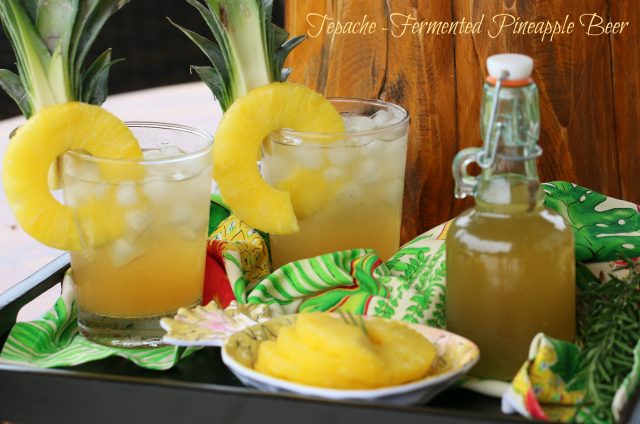
Tepache-Fermented Pineapple Beer
I was cruising Instagram the other day and came across a recipe that sparked my interest - Tepache.
Tepache is a fizzy, fermented Mexican drink made with pineapple peels, sugar, and water. I was intrigued enough to try a batch and now I'm addicted.
I've adapted the recipe by adding, ginger, hot peppers, cinnamon sticks, and whole clove. If you're looking for a more fruity drink, add some mango peels.
Taste
The flavor of this exotic beverage is sweet and bubbly, similar to kombucha but has none of the vinegar sourness. The drink is very refreshing and simple to make; which can be dangerous if you've got a palette that adores unique flavors.
The recipe is adapted from @liveeatlearn.
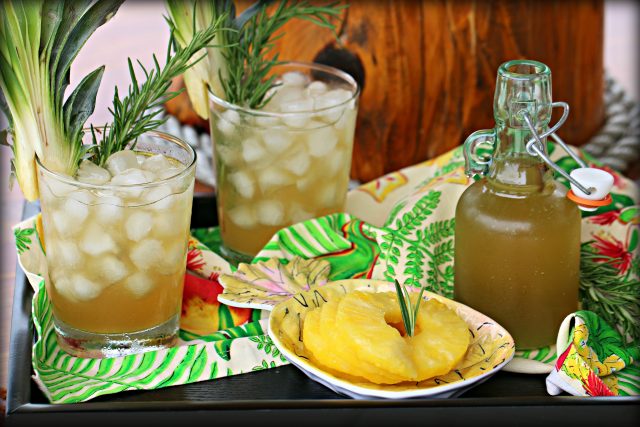
Feeding Natures Yeast
Yeast lives naturally everywhere and is used to make many recipes; including sourdough starter, yeast bread, pasta, beer and so much more. The yeast is activated by sugar which transforms the concoction into a bubbly, fermented drink. The flavor is sweet, tangy, and slightly intoxicating. However, the alcohol is very low, about 2% ABV.
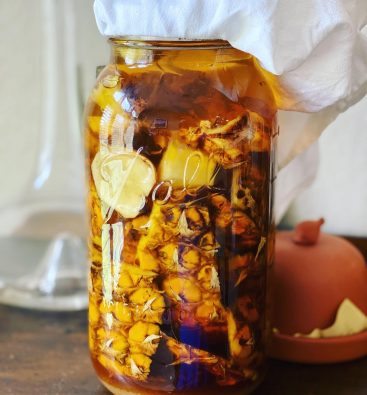
Origins
Tepache dates from Pre-Columbian Mexico as a popular drink among the Nahua people of central Mexico; in the Nahuatl (also known as Aztec) language. The word tepiātl means "drink made from corn". Originally, corn (maize) was the base of tepache, but the contemporary recipe for tepache uses pineapple rinds as the foodstuff fermented to produce the tart drink that is tepache.[1] Some varieties of tepache, known as tepache de tibicos, are fermented using symbiotic cultures of tibicos.[2] Source: Wikipedia
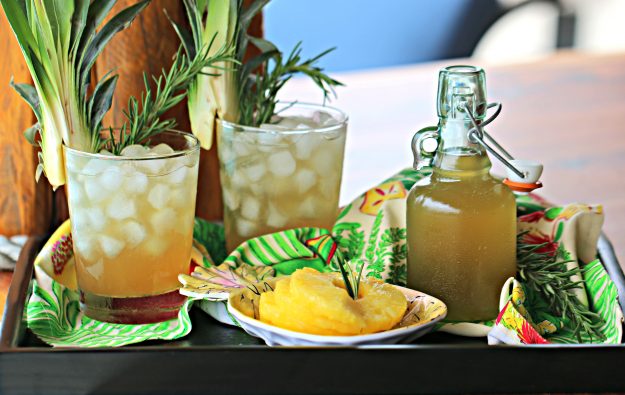
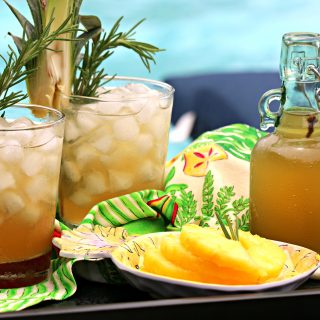
Tepache-Fermented Pineapple Beer
Ingredients
- 1 whole pineapple peels removed and rinsed with cold water
- 1 cup light brown sugar
- 3-4 sliced fresh ginger
- 3 hot peppers your choice of jalapeno or piquillo
- 4 cinnamon sticks broken in half
- 5 whole cloves
- Coldwater
Instructions
- Step 1: Cut the PineappleRemove the crown and base of the pineapple, then rinse the body of the pineapple with cool tap water to remove potential pests or dirt. Cut the peel from the pineapple in big chunks, leaving about ½ inch of the pineapple flesh on the peel. Reserve pineapple flesh for another use.
- Step 2: AssembleTo clean, large glass or ceramic jar, add light brown sugar (or piloncillo), and some water, stirring well to dissolve the sugar. Add pineapple rinds, and remaining ingredients, then cover with remaining water. The pineapple will need to be submerged in the liquid to prevent mold, so weigh it down using either a glass, spoon, or fermentation weight.
- Step 3: FermentCover with a clean dishtowel or a few layers of paper towels, then secure with a rubber band. This will keep out pesky gnats or flies while allowing the yeasts to have oxygen. Set somewhere dark and room temperature (ideally 75-80°F, 24-26°C), letting it ferment for 1 to 3 days.
- Step 4: Drink or BottleThe tepache is finished fermenting when you see many small bubbles on top and it tastes how you want it to (test by drawing some out with a paper straw, using your finger to keep the tepache in the straw).
- The longer it ferments, the less sweet and more yeast flavored it will become. The reaction will go more quickly in a warm environment and will slow down when it is cooler, so begin tasting after 24 hours, letting the fermentation run for up to 72 hours.
- At this point, you can either refrigerate and drink the tepache as it is, or carbonate it by bottling the liquid in what we call the second fermentation.
- Pro-tip: There is still yeast left on your pineapple peels, so you can reuse them for one or two more rounds!
- Second Fermentation
- Much like in brewing kombucha, the second fermentation is an optional step used to add carbonation (and sometimes flavor) to your drink.
- By bottling the tepache in an airtight container, all the CO2 released by the yeast is trapped in the liquid, creating that fizzy, beer-like texture.
- Step 5: Second Fermentation (optional, but recommended)Funnel the liquid into fermentation-grade bottles (I recommend these bottles), leaving about 2 inches free at the top of each bottle. Set somewhere room temperature and dark, then allow it to ferment for another 1 to 3 days. After 24 hours, pop open a bottle to see how carbonated it has become and to gauge how much longer it will need. When the tepache has reached a carbonation level that you like, transfer the bottles to the refrigerator to stop the fermentation.
- Please note, carbonating tepache does involve pressure build up inside the bottles, which is why I recommend bottles specifically made for fermentation. As with any second fermentation, there is a risk of bottles exploding, so check on your bottles regularly and move them to the refrigerator when done.
Why Isn't It Bubbling?
If your tepache isn't bubbling, it's likely your yeast isn't working well. This can be from using water that is too hot when rinsing which will kill the yeast. Don't get discouraged, just try again - it's worth the effort.
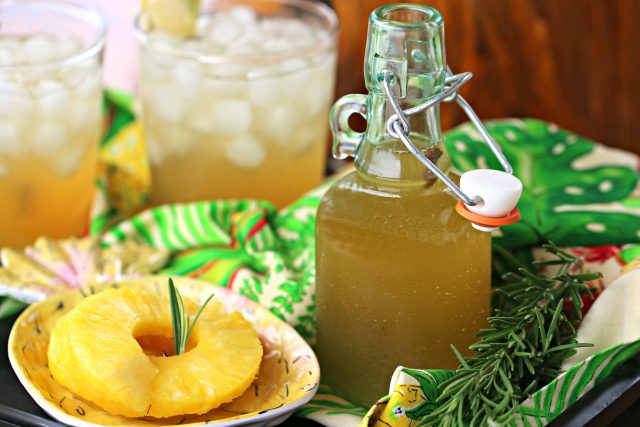

Mak Shima
Aloha Rebecka,
I've seen it mentioned on other sites that mango skins shouldn't be used for tepache as they contain irritants similar to that found in poison oak. I'd like to try mango skins per your recommendation, but those comments have scared my wife a bit. Would appreciate your take on this.
Mahalo
athomewithrebecka
Mahalo Mak,
Very good question. Thanks for asking.
I've heard that some people react to the mango skins, in the same way, as poison oak. I've never reacted to the irritant but would suggest that if you have any reservations concerning the use of mango peels, start your Tepeche with pineapple skins then add about a cup of mango puree to the second fermentation. I would add about 1/4 cup more sugar to keep the fermentation process active and for a sweeter product. This way, you still get all the wonderful flavor of the mango tepache without the worry of harmful irritants.
Let me know how it goes. Mahalo
Justin
If you put the tepache I. The fridge after the second ferment, how long does it last?
athomewithrebecka
Hi Justin,
Homemade tepache shelf life can be variable. My rule: I would generally say (as with most ferments) "until it goes bad," (mold or an off smell), but I would trust a capped bottle for at least a year if not "indefinitely." in the bottle and it's sealed airtight. Tepache has enough sugar to eat the bacteria as long as it's chilled. The timeframe is variable depending on the temperature of your refrigerator. I keep my second fridge very cold for my ferments. Thanks for asking.